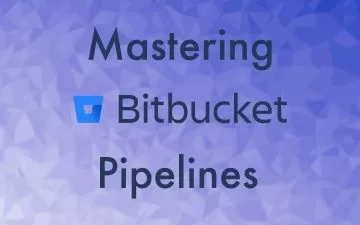Detection Engineering Masterclass: Part 2
Anthony Isherwood
5:29:26
Description
Detection Engineering Zero to Hero
What You'll Learn?
- Understand how to write detection documentation
- Ability to automate document validation
- Learn GitHub actions to validate documents automatically
- Write Python scripts to sync up the detection library with the SIEM
- Write Python scripts to create metrics
Who is this for?
What You Need to Know?
More details
DescriptionWelcome to the Detection Engineering Masterclass: Part 2!
Don't Purchase if you haven't gone through Part 1!
Two Part Course Overview
This course will first teach the theory behind security operations and detection engineering. We’ll then start building out our home lab using VirtualBox and Elastic’s security offering. Then we’ll run through three different attack scenarios, each more complex than the one prior. We’ll make detections off of our attacks, and learn how to document our detections. Next we’ll dive more into coding and Python by writing validation scripts and learning out to interact with Elastic through their API. Wrapping everything up, we’ll host all our detections on GitHub and sync with Elastic through our own GitHub Action automations. As a cherry on top, we’ll have a final section on how to write scripts to gather important metrics and visualizations.
This course takes students from A-Z on the detection engineering lifecycle and technical implementation of a detection engineering architecture.
While this course is marketed as entry level, any prerequisite knowledge will help in the courses learning curve. Familiarity with security operations, searching logs, security analysis, or any related skillset will be helpful (but ultimately not required).
Part Two Overview
This is part two of a two part series on Detection Engineering! This course is meant to kickstart anyone interested in security analysis, detection engineering, and security architecture.
The first part is the meat of the course, where we will go over:
Detection Engineering Theory
Setting Up our Lab
Working with Logging and our SIEM
Running Attack Scenarios to generate logs and create alerts
Learn how to use Atomic Red Team for testing
The second part deals with detection as code philosophies, which will be very Python and GitHub heavy (but don't worry! I'll walk you through everything step by step.)
By the end of this two part course, you'll have a full stack detection engineering architecture. You'll be able to:
Run offensive tests
Review the logs
Make alerts
Save alerts using a standardized template
Enforce template data through code
Programmatically push the alerts to the SIEM
Run periodic metrics off the detection data
The entire course runs ~11 or so hours in length, but should take ~20-40 hours to complete fully. All code written will be available on the course GitHub in case you'd like to skip the Python heavy sections.
Requirements
The ability to run 2-3 VMs on a local machine:
Ubuntu Linux
ParrotOS
Windows 11
Minimum Requirements
CPU Cores: 4
RAM: 8gb
Hard Drive Space: 50GB
Recommended Requirements
CPU Cores: 6+
RAM: 16GB+
Hard Drive Space: 50GB+
You can technically get by with the main host having only a couple cores and 8 gigs of RAM, but any additional resources that can be assigned to your VMs will make the process smoother.
Thanks for stopping by!
Who this course is for:
- security analysts
- incident responders
- detection engineers
- cyber security college students
Welcome to the Detection Engineering Masterclass: Part 2!
Don't Purchase if you haven't gone through Part 1!
Two Part Course Overview
This course will first teach the theory behind security operations and detection engineering. We’ll then start building out our home lab using VirtualBox and Elastic’s security offering. Then we’ll run through three different attack scenarios, each more complex than the one prior. We’ll make detections off of our attacks, and learn how to document our detections. Next we’ll dive more into coding and Python by writing validation scripts and learning out to interact with Elastic through their API. Wrapping everything up, we’ll host all our detections on GitHub and sync with Elastic through our own GitHub Action automations. As a cherry on top, we’ll have a final section on how to write scripts to gather important metrics and visualizations.
This course takes students from A-Z on the detection engineering lifecycle and technical implementation of a detection engineering architecture.
While this course is marketed as entry level, any prerequisite knowledge will help in the courses learning curve. Familiarity with security operations, searching logs, security analysis, or any related skillset will be helpful (but ultimately not required).
Part Two Overview
This is part two of a two part series on Detection Engineering! This course is meant to kickstart anyone interested in security analysis, detection engineering, and security architecture.
The first part is the meat of the course, where we will go over:
Detection Engineering Theory
Setting Up our Lab
Working with Logging and our SIEM
Running Attack Scenarios to generate logs and create alerts
Learn how to use Atomic Red Team for testing
The second part deals with detection as code philosophies, which will be very Python and GitHub heavy (but don't worry! I'll walk you through everything step by step.)
By the end of this two part course, you'll have a full stack detection engineering architecture. You'll be able to:
Run offensive tests
Review the logs
Make alerts
Save alerts using a standardized template
Enforce template data through code
Programmatically push the alerts to the SIEM
Run periodic metrics off the detection data
The entire course runs ~11 or so hours in length, but should take ~20-40 hours to complete fully. All code written will be available on the course GitHub in case you'd like to skip the Python heavy sections.
Requirements
The ability to run 2-3 VMs on a local machine:
Ubuntu Linux
ParrotOS
Windows 11
Minimum Requirements
CPU Cores: 4
RAM: 8gb
Hard Drive Space: 50GB
Recommended Requirements
CPU Cores: 6+
RAM: 16GB+
Hard Drive Space: 50GB+
You can technically get by with the main host having only a couple cores and 8 gigs of RAM, but any additional resources that can be assigned to your VMs will make the process smoother.
Thanks for stopping by!
Who this course is for:
- security analysts
- incident responders
- detection engineers
- cyber security college students
User Reviews
Rating
Anthony Isherwood
Instructor's Courses
Udemy
View courses Udemy- language english
- Training sessions 33
- duration 5:29:26
- Release Date 2023/09/10










